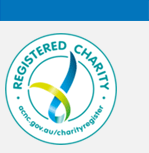Author Credentials
Author names
Rami K. Aldwikat a,b,c, Elizabeth Manias a,b,d,e, and Patricia Nicholson a,b,d,e
Affiliations
School of Nursing and Midwifery, Deakin University, Geelong, Victoria, Australia a
Centre for Quality and Patient Safety Research, Faculty of Health, Deakin University
Geelong, Victoria, Australia b
Operating Theatre, The Royal Melbourne Hospital, Parkville, Victoria, Australia c
Institute for Health Transformation, Deakin University, Geelong, Victoria, Australia d
Department of Medicine, The Royal Melbourne Hospital, The University of Melbourne,
Parkville, Victoria, Australia e
Abstract
Purpose: The aims of this study were to explore nurses’ perceptions of the usability and clinical utility of two screening tools for delirium detection in the Post Anaesthesia Care Unit (PACU) and orthopaedic surgical wards settings, and to identify nurses’ decisions about patient care delivery based on delirium assessment outcomes. The tools studied were the 3D-CAM and 4AT – the three-minute diagnostic interview for CAM (Confusion assessment method) delirium and the 4 ‘A’s test, respectively.
Method: A focus group methodology was used. Five semi-structured focus groups were conducted with 24 nurses working in the PACU and orthopaedic surgical wards. Focus group sessions were digitally recorded and transcribed verbatim. Thematic analysis was used to analyse the data.
Findings: Five major themes were identified: 1. nurses’ previous experience assessing patients for delirium, 2. usability of the screening tools, 3. clinical utility of the screening tools, 4. changes to improve the usability of screening tools in clinical practice, and 5. decision-making and clinical judgement.
Nurses in the PACU and orthopaedic surgical wards confirmed that the 4AT tool was quick and easy to use. PACU nurses were largely willing to adopt it into their practice, but nurses working in the orthopaedic surgical wards expressed that the 4AT tool was too generic and could not be used as the only screening tool to detect delirium. On the other hand, nurses working in the orthopaedic surgical wards viewed the 3D-CAM as more thorough and expressed their willingness to adopt it into their clinical practice.
Nurses in both wards believed that in order to increase the utilisation and adoption of the tools in practice some modifications are required; for example, reducing the number of observation-based questions and repetitive questions in the 3D-CAM and having an alternative question to measure attention criteria in the 4AT tool.
Conclusion: While the 4AT screening tool was feasible for use in the PACU the 3D-CAM was feasible for use in orthopaedic surgical wards. However, both tools require some modification to the content to facilitate routine use in clinical practice.
Recommended Citation
Aldwikat, Rami Kamel Mustafa; Manias, Elizabeth; and Nicholson, Pat F. Dr
(2023)
"Nurses’ perceptions of screening for delirium in the Post Anaesthesia Care Unit and orthopaedic surgical wards: A qualitative study,"
Journal of Perioperative Nursing: Vol. 36
:
Iss.
1
, Article 5.
Available at: https://doi.org/10.26550/2209-1092.1220
Creative Commons License

This work is licensed under a Creative Commons Attribution 4.0 License.
Included in
Other Medicine and Health Sciences Commons, Perioperative, Operating Room and Surgical Nursing Commons


